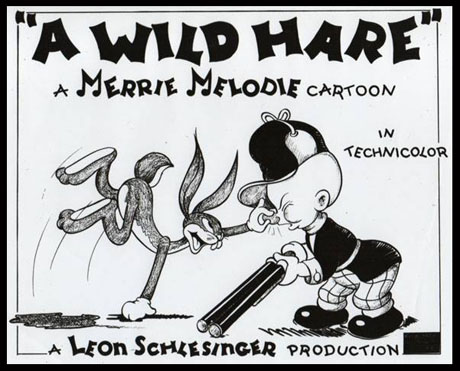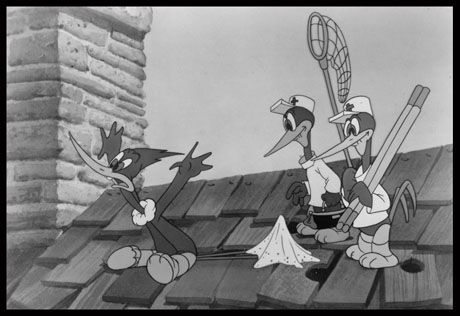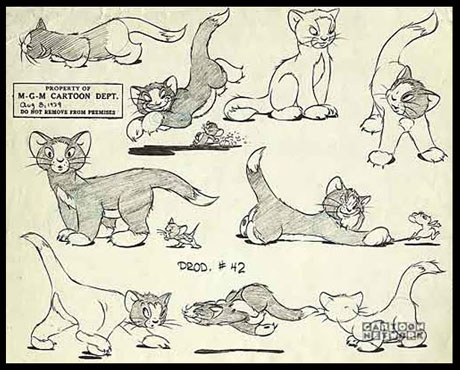
The start of a New Year. A time to look ahead to where we are going and a time to look back to where we’ve been.
As we begin this first month of this new (and hopefully much better!) year, it’s a fitting time for animation fans to reflect back on “beginnings,” specifically those of their favorite (and most iconic) classic animated characters.
They are now part of our pop culture zeitgeist, but they all had to start somewhere and here is where they did:
Mickey Mouse, Steamboat Willie (1928)
Walt Disney’s most iconic Mouse made his debut in this quaint black and white short (one of the first to use synchronized sound), playing a deckhand on a steamboat to captain Pete, who Mickey eventually rescues Minnie from.
The “Oh boy!’ amiable-host-like personality that would eventually be Mickey Mouse was definitely not in place here. In Steamboat Willie, Mickey is much more mischievous and even insubordinate (with a penchant for animal abuse, as he uses the barnyard animals as musical instruments). Through the years, his persona would most definitely mellow.
His look would also be the first of many that would become a “Mickey through the years” evolution, that has, ironically, come full-circle in the current series of Mickey Mouse shorts. His current, “Pie-eyed,” red short, white gloved, skinnier frame, could almost be “Steamboat Willie 2.0”
For Mickey Mouse, everything old truly is new again.
Betty Boop, Dizzy Dishes (1930)
The darling of Max Fleischer’s Studio’s first appearance was really a cameo in this short, but is definitely a standout and one can see the reason why she was soon given her own starring roles.
Dizzy Dishes centers on a restaurant with a floorshow, all of which is populated by anthropomorphic animals. The star is Bimbo, the cook/waiter (a dog-like character) and his efforts to run the kitchen and serve the tables.
At one point, while running frantically through the restaurant, he stops to watch the singer, who sings in a high-pitch voice and with the look of a jazz-age flapper girl (complete with curly hair and a short skirt). It seems like we are watching Betty Boop…except something is a little off.
In this cartoon, which is credited as Betty’s debut, she was actually designed as a female dog (complete with a black, button nose and floppy ears). It took about a year for Betty to be transformed into the human character we know and love. Her floppy ears became earrings and her button canine nose, became a button human nose.
One major aspect of Betty that was in place in Dizzy Dishes was her now famous voice. Here, the character was voiced by Little Ann Little, an actress and singer at the time, not by Mae Questel, who became most famous for providing Betty’s voice.
Regardless, it’s great to look back at Dizzy Dishes and see Betty’s “Boop-opp-ah-doop” already in place.
Popeye, Popeye the Sailor (1933)
The other big star of the Fleischer Studio had first made his debut in the comic strip, Thimble Theater in 1929 and it was Max and Dave Fleischer who began adapting the characters from the newspaper strip into a series of cartoon shorts.
The first was Popeye the Sailor, which was technically a “Betty Boop Cartoon” as heralded above the title, in which she simply made a cameo and gave the rest of the film over to Popeye and the gang.
The short opens centering on Popeye’s already existing popularity, showing newspapers coming off the presses with the headline; “Popeye A Movie Star: The Sailor with the “Sock” Accepts a Movie Contract!”
Everything we would come to expect from and love about Popeye is squarely in place in his debut, he even enters the short singing his theme song. The plot is, no surprise, the standard: Bluto trying to win Olive Oyl’s affections, fighting Popeye, who then eats his spinach and beats Bluto (in this first cartoon, he punches Bluto into a makeshift coffin!).
In one scene, while Popeye and Olive Oyl are at a carnival, they stop to watch Betty Boop who is performing there and Popeye even manages to jump up on stage and perform with Betty.
Popeye the Sailor also features the usual Fleischer flare for inventive sight gags (Popeye punches a fish mounted on a wall, which then transforms into cannisters of sardines) and full animation (with Olive strapped to railroad tracks, Popeye punches out a train, which collapses brilliantly like a deck of cards).
Even though this was his first film, very little here from Popeye’s appearance to the familiar paradigm of a plot changed much through the almost ninety years since his debut. As Popeye himself would say, “I Yam What I Yam!”
Bugs Bunny, A Wild Hare (1940)
Once again, as iconic as they come in animation, not just in look, but also in personality, which was all right here in what’s considered Bugs’ first appearance, in this short directed by animation legend Tex Avery.
A similar, wise-acre, unnamed rabbit had appeared two years prior in Porky’s Hare Hunt, but it was here that we got the look (albeit it would continue to be altered through the years), the persona and yes, the trademark greeting, “What’s Up, Doc?”
There have been conflicting stories as to how the line was introduced. Director Avery claims that he came up with the line, as many friends in his native Texas used it, while master voice actor Mel Blanc claims to have ad-libbed the line.
Regardless, the line has been seared into our movie lexicon and for generations, just the mention of “What’s Up, Doc?’ immediately conjures up images of Bugs Bunny.

A Wild Hare centers on a showdown between Bugs and Elmer Fudd, one that audiences would revel in many times after.
But, Bugs’ ability to outsmart and out smart-aleck the dim-witted hunter is all here (“You wouldn’t be that skwewy wabbit, would you?,” asks Elmer. “Hmmmmm….could be,” replies Bugs, after which he plants a big kiss on Fudd).
From this first cartoon, it’s good to see that not much about Bugs changed through the years and that he’s always been a “waskally wabbit!”
Woody Woodpecker, Knock Knock (1940)
Walter Lantz’ star burst into the scene in this Andy Panda cartoon, in which he tortures poor Andy and his father.
Woody’s initial personality is extremely similar to that of Bugs Bunny (who had debuted earlier the same year), but Woody has an extra dash of annoyance and insanity here that was somewhat tamed down through the years.
Fittingly, Woody’s original voice here was provided by Mel Blanc, who would eventually sign an exclusive contract for Warner Bros. and stop proving Woody’s voice after thee cartoons. However, Blanc would bring much of the character’s well-known vocal traits to Woody’s debut, including the famous laugh.
In fact, when we first meet Woody in Knock Knock he asks “Guess who?” which would become his “entrance line” in cartoons through the years.

Like many characters, Woody’s look in his debut was somewhat different from what he would become. Here, he sports a thinner, almost hammer shaped-head, buck-teeth and thicker, swollen legs.
It would be four years before Woody became streamlined, thanks to the work of animation legends Emery Hawkins and James “Shamus” Culhane, who gave the character a sleeker appearance and simpler color scheme.
One thing that didn’t change through the years was the overt penchant for “cartoon violence” that would be a big part of Woody’s future cartoons. In Knock Knock, Woody is almost done in by a shotgun and a hidden bomb. Andy eventually captures Woody by placing salt on his tail (which had been an old superstitious belief).
It’s a wonder Woody made it back for future cartoons!
Tom & Jerry, Puss Gets the Boot (1940)
They fought from their first, opening frame. The ever battling, popular cartoon pair of Tom and Jerry had a contentious relationship from the get-go in this, their first cartoon short. In fact, in the opening scene, Jerry is attempting to get away from Tom, who is holding on to the mouse’s tail.
The usual cat-and-mouse chase shenanigans ensure, except here, Tom is chastised by the (politically incorrect) maid, who informs him that she will throw him out of the house if he breaks one more thing. Jerry sees the opportunity here: if he can implement Tom (referred to as “Jasper” in this first short) he will have the house to himself.
What follows are deviously humorous scenes of Jerry attempting to cause chaos, so that Tom will be blamed, with Tom attempting to keep everything quiet. There’s an ingeniously choreographed sequence, in which Jerry knocks plates off of a shelf and Tom/Jasper runs along underneath, catching them, resulting in an ever-growing stack.
Puss Gets the Boot features what would become standard in all Tom & Jerry cartoons: a chase between the two set against a veiled plot, of sorts. William Hanna and Joseph Barbera, are said to have directed the short (with Rudolph Ising), which explains why there is so much consistency with future Tom and Jerry outings.

Jerry looks almost identical to his appearance in later cartoons, while Tom changed somewhat drastically. Here, his body is fuller (almost kitten-like) and his facial design was much different, as well.
What is firmly in place from the get-go were the personalities of the two: Tom’s obsessive tenacity and Jerry’s mischievous revenge are here on display.
Thankfully though, the decision was made to change Tom’s name, because “Jasper and Jerry” just doesn’t have the right ring to it.
These cartoon shorts just scratch the surface of the innumerable first appearances of many of other favorite classic cartoon stars. This time of year, makes it the perfect season to binge them all.
Looking back at each of them is that like watching an early performance of your favorite actor and actress, as you marvel at how far they’ve come.
- An Eye for A Classic: The 60th Anniversary of “Mr. Magoo’s Christmas Carol” - December 22, 2022
- A Very Merry Mickey: The 70th Anniversary of “Pluto’s Christmas Tree” - December 19, 2022
- A Fine French Feline Film: The 60th Anniversary of “Gay Pur-ee” - December 12, 2022


 January 8th, 2021
January 8th, 2021  Michael Lyons
Michael Lyons  Posted in
Posted in  Tags:
Tags: 






